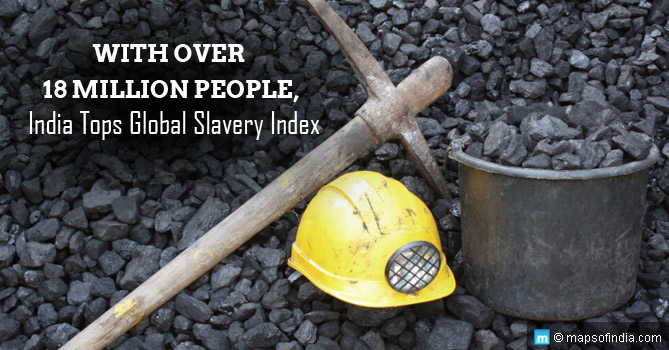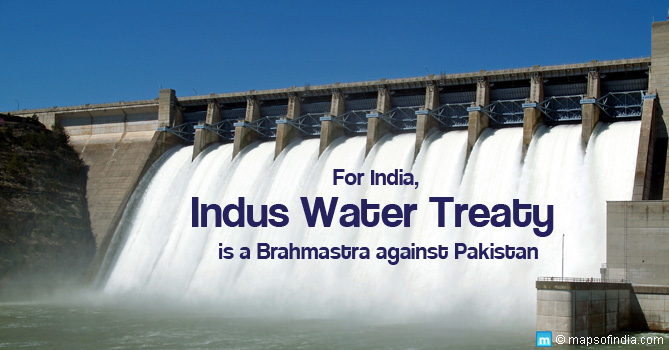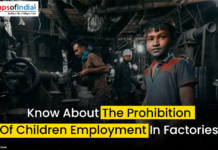On 15 August 2016, India will celebrate its 70th year of Independence and it has plenty of reasons to do so. However, this day is also one for India to introspect on areas where we have failed to do justice to the freedom and liberty that our freedom fighters so valiantly fought for.
According to Global Slavery Index 2016 Report released recently, India tops the world in absolute number of people working as modern day slaves and the sheer number should have all of us hanging our heads in shame. 18.35 million out of a total population of 1.31 billion are still slaves in modern India.
Compare this number with the other large country – China, that has similar demographics to India. As per the report, China has 3.38 million people out of a total population of 1.37 billion working as modern day slaves. India beats China by over 5x and that’s reason enough for India to do some serious introspection as we go about celebrating our achievements in the 70th year of our independence.
The Global Slavery Index 2016 covers 167 countries to compare pre-defined parameters of human freedom prevailing in countries and their government’s response in addressing them. A survey was carried out by Gallup – a globally recognized research-based company, in association with Walk for Freedom, which has initiated similar surveys since 2013.
Snapshot of the 2016 Report:
- Countries covered: 167
- Total number of slaves globally: 45.8 million
- Percentage of slaves in just 5 countries including India: 58%
Top 5 nations with number of Slaves (absolute numbers) and as a percentage of their population:
- India: 18.35 million ; 1.40%
- China: 3.38 million ; 0.24%
- Pakistan: 2.13 million ; 1.13%
- Bangladesh: 1.53 million ; 0.95%
- Uzbekistan: 1.23 million ; 3.97%
Top 5 nations with Slaves as percentage of their population:
- North Korea: 4.37%
- Uzbekistan: 3.97%
- Cambodia: 1.64%
- India: 1.40%
- Qatar: 1.35%
Top 5 nations with minimum number of Slaves (absolute numbers) and as a percentage of their population:
- Luxembourg: 100 ; 0.018%
- Iceland: 400 ; 0.123%
- Barbados: 600 ; 0.212%
- New Zealand: 800 ; 0.018%
- Ireland: 800 : 0.018%
Top 5 Governments taking most action:
- The Netherlands
- United States of America
- United Kingdom
- Sweden
- Australia
The Report covered 24 vulnerabilities and grouped them into 4 dimensions:
Dimension 1 – Civil and Political Protections
- Confidence in judicial system
- Political Instability
- Weapons Access
- Discrimination – Sexuality
- Displaced persons
- The Index 2016 – Government Response
- Political Rights Measure
Dimension 2 – Social Health and Economic Rights
- Financial inclusion: borrowed any money
- Financial Inclusion: received any money
- Cellphone subscriptions
- Social safety net
- Undernourishment
- Tuberculosis
- Water improved access
Dimension 3 – Personal Security
- Financial Inclusion: availability of emergency funds
- Violent crime
- Women’s physical security
- GINI coefficient
- Discrimination: intellectual disability
- Discrimination: immigrants
- Discrimination: minorities
Dimension 4 – Refugee Populations and Conflict
- Impact of terrorism
- Internal conflict
- Refugees resident
The India Story
In 1993, 45% of India’s population lived in poverty. By 2011, the figure had reduced to 21%. That the good news and a significant improvement which governments through the period deserve full credit for setting India on a growth path of rapid development.
At the same time, in the 70th year of our attaining freedom, the fact that 18.35 million people are still living as slaves reflects the inherent contradiction in the India growth story.
So why are 18.35 million people still living as modern day slaves?
The hard fact is that India is still to free itself completely of legacy evils arising out of caste, feudal and gender discrimination that has been embedded into our social life for generations.
In 2016, Gallup conducted random sample surveys in 15 states of India covering around 80 percent of the population. The survey revealed that sectors with maximum number of persons working as slaves were domestic homes, manual labour, manufacturing, agriculture, fishing, construction, forced begging and sex industries.
Bonded labour
Though outlawed several years earlier, bonded labour remains in existence due to intergenerational debt and social acceptance of the system to clear the debt.
In the absence of micro-finance and loan facilities, people from economically weaker sections would take loans from the village money lender at high interest rates. With erratic monsoons and lack of development opportunities, these people would be unable to repay the debt and would often fall into a debt trap where they were forced to work for the money lender without pay, which in turn, would then transfer to the next generation after their death.
Even today, several people continue to work the fields belonging to money lenders as they continue to repay their father’s debt. Unfortunately, this practice has social acceptance in many rural and semi-urban areas even today.
Domestic workers
A combination of feudal mindset that exploits abject poverty, forces people to work as domestic workers from a very young age. Parents offer their young children to work in people’s homes in return for food and a very low wage that in many cases never get paid. These people have no skills or social support and grow into adult hood with nowhere to go but remain working under terrible conditions for a lifetime.
Forced begging
This has now taken the shape of an industry where children from poor families are forced to work as beggars. In many cases, these children are deliberately physically maimed in order to extract public sympathy and money. There is a well-established money collection system that has money flowing up the pyramid in mafia-like organizational structures.
Children forced into militancy
From Naxal-affected areas to parts of North-East and J&K, children are coerced and forced into taking up arms against government security forces. They are made to work without pay and face frequent physical abuse. In many cases, children are forced to join militant movements in return for their parent’s safety. It is difficult to gauge the numbers involved but these seem to be growing as militancy continues to rear its ugly head from time-to-time.
Commercial sexual exploitation
India is a major human traffic transit point and destination, especially for young vulnerable girls and women. Sharing a large and mostly open border with Nepal, Bangladesh and Myanmar, India has a lot of human traffic flowing into the country which is mostly driven by organized gangs.
Young girls face rape and torture as they are repeatedly sold from one trafficker to another, finally ending up in a sordid brothel in India or another country. They are forced to live in sub-human conditions and are made to share a large part of their earnings with the brothel keeper.
In many cases, young girls are drawn with the promise of jobs or marriage and then sold off to a prospective buyer who physically exploits them before selling them off to some brothel keeper.
This is the story of India today, as it co-exists with achievements in IT, space, science & technology and industry. As we unfurl the tri-color this year to celebrate our 70 years of our freedom, do spare a thought for those 18.35 million fellow citizens who still await their freedom. It’s time to move from sympathy to action and there is no better day than 15th August to make that pledge.
Related Information:
70th Independence Day of India – 15th August 2016
Independence Day Speech Ideas for Students, Children, Teachers
About Independence Day
Why India Matters
Development in India After Independence
Paly Quiz on Indian Independence Day
Is India Truly Independent?
India Flag
Free Download Independence Day Wallpapers
National Song of India
National Anthem of India
Freedom Fighters of India
Unknown Women Who Inspired India’s Freedom Struggle
National Symbols of India
Nehru’s Message to Nation
Kite Flying on Independence Day
15th August 1947: India after Partition is declared Independent of British Rule
26 January 1930 was Declared as Purna Swaraj Day
July 18th 1947: The India Independence Act 1947 Comes into Force
Unsung Heroes of Indian Independence
Pre-Partition Map of India





